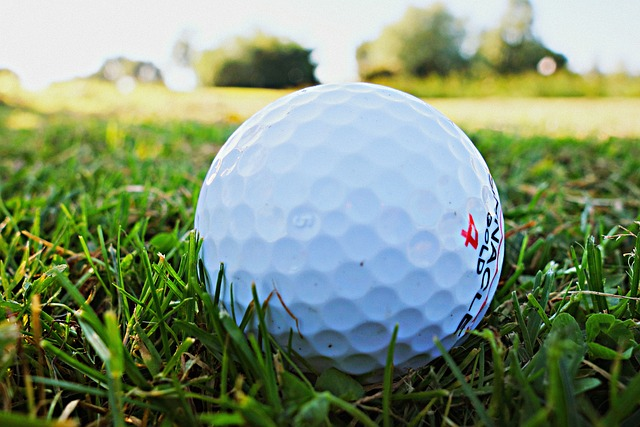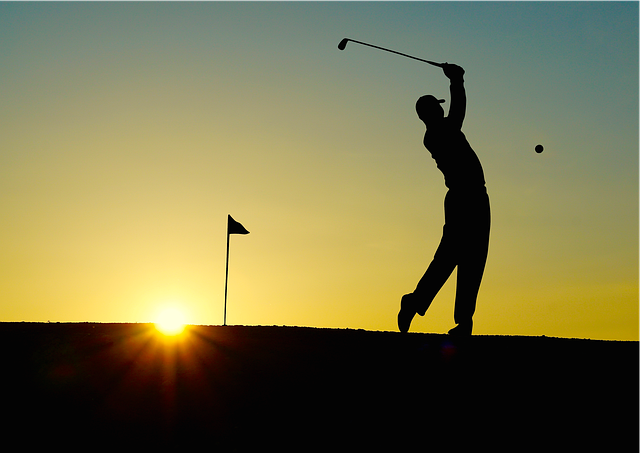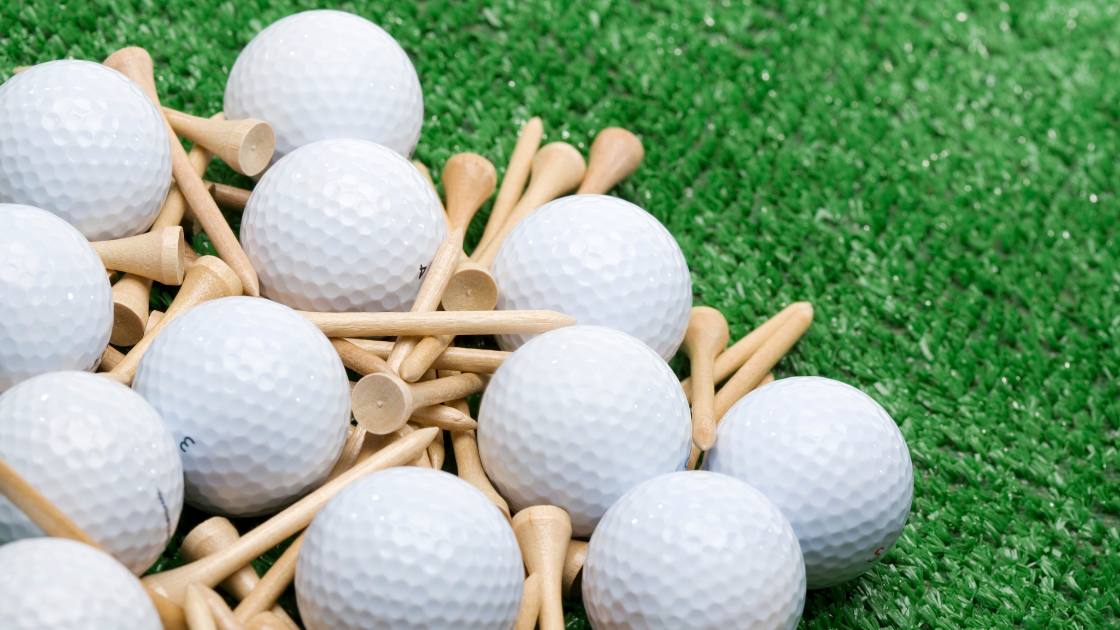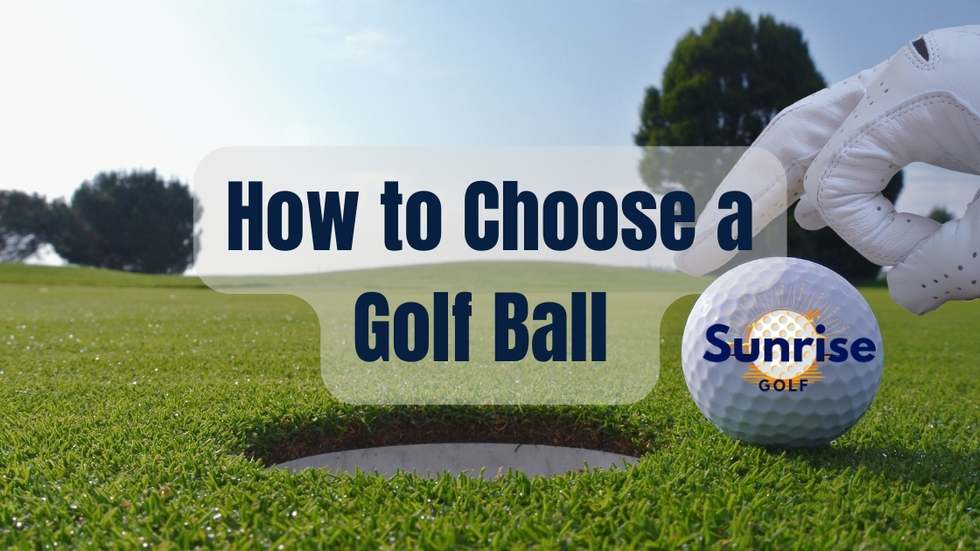Have you ever wondered how to choose a golf ball, and how choosing the right golf ball can significantly improve your game?
With numerous types and variations available, it can be overwhelming to find the perfect fit for your skill level and playing style.
But worry not! In this comprehensive guide on how to choose a golf ball, we will walk you through the essential factors to consider, helping you unlock your full potential on the golf course.
Understanding Golf Ball Basics

Comprehending the fundamentals of golf balls is crucial in selecting the best one for your game. Golf balls are designed to suit different playing styles and requirements. They come in a variety of sizes, shapes and types.
The construction of a golf ball plays a significant role in determining its performance. By understanding golf ball construction, including the components, materials, and dimple patterns, you can make an informed decision and enhance your performance on the course.
Construction Components
A golf ball consists of three main components:
- Core: The core of the golf ball transfers energy, affecting ball speed and overall performance.
- Mantle: The mantle of the golf ball provides additional layers of material that help control the ball’s flight trajectory.
- Cover: The cover of the golf ball determines the ball’s flight trajectory and provides overall control, including golf ball spin.
These components work together to create a golf ball that performs optimally on the course.
The combination of these components creates balls with varying spin and control properties, such as the premium Mizuno RB 566, which offers superior flight and control due to its 2-piece construction.
Materials and Their Effects
Materials used in golf balls offer unique benefits depending on player preferences and playing style. Some common materials include:
- Urethane: Provides remarkable spin control and a gentle feel.
- Surlyn: Renowned for its durability and firmer feel, making it popular among novice golfers seeking straighter shots.
- Ionomer: Offers a balance of distance, durability, and feel.
Ionomer offers a balance between softness and durability, providing a softer feel than synthetic yet more durability than urethane. Two-piece golf balls, made of these materials, are more resilient and offer a softer cover that allows the grooves in your iron to grip the ball more effectively, generating additional spin.
Dimple Patterns and Aerodynamics
Dimple patterns, the small indentations on a golf ball’s surface, have several benefits.
- They reduce drag, allowing the ball to travel farther
- They create spin, providing better control and accuracy
- They disrupt airflow, allowing the ball to remain airborne for longer periods
These benefits make dimple patterns an essential feature of golf balls.
Golfers with lower swing speeds may benefit from a ball with increased and deeper dimples to generate more lift.
Assessing Your Skill Level and Swing Speed

Your skill level and swing speed play a vital role in choosing the right golf ball. Golfers can be classified into three categories: beginners, intermediates, and advanced players. Each category has specific needs, preferences, and requirements when it comes to selecting the right golf ball.
Let’s dive into each category to understand their unique requirements.
Beginner Golfers
For beginner golfers, it is essential to focus on durability, distance, and consistency when choosing a golf ball. Harder materials such as Surlyn or ionomer provide durability, making them suitable for beginners.
Moreover, two-piece golf balls, including recycled golf balls, offer a high degree of resilience, allowing for extended use before requiring replacement.
Best Golf Balls for Beginner Golfers:
- Titleist DT TruSoft: The Titleist DT TruSoft golf ball is an excellent choice for beginners due to its exceptional softness and low compression. This allows beginners to achieve greater distance and control with slower swing speeds. Its consistent flight and reliable greenside control make it a great ball for those new to the game.
- Callaway Supersoft: The Callaway Supersoft golf ball is designed with a soft cover and low compression core, making it forgiving for beginners who are still working on their swing consistency. It provides straighter shots and decent distance, making it a confidence booster on the course.
- Srixon Q-Star: The Srixon Q-Star golf ball offers a balance of distance and control, making it suitable for beginners who are starting to refine their skills. It has a lower compression core for enhanced feel and forgiveness, and its aerodynamic design contributes to consistent ball flight.
Intermediate Golfers
Intermediate golfers can benefit from using soft cover golf balls with more spin and control. Here are some features to look for in a golf ball for intermediate players:
- Soft cover made from materials like urethane
- Medium compression rating
- Suitable balance of distance and feel
- Helps improve consistency and accuracy on the course
Soft cover balls provide more spin and control, allowing intermediate golfers to hit the ball with greater control.
Best Golf Balls for Intermediate Golfers:
- TaylorMade TP5: The TaylorMade TP5 golf ball is ideal for intermediate golfers seeking a combination of distance, spin, and control. Its multi-layer construction and urethane cover offer great feel around the greens, while its high-energy core maximizes distance without sacrificing control.
- Titleist Pro V1: The Titleist Pro V1 golf ball is a favorite among many intermediate players for its exceptional performance across all aspects of the game. Its softer feel, penetrating flight, and excellent greenside control make it versatile for players looking to refine their skills.
- Bridgestone Tour B RX: The Bridgestone Tour B RX golf ball is designed for golfers with moderate swing speeds. It provides a good balance of distance and accuracy, thanks to its Gradational Compression Core and SlipRes cover. Intermediate players can benefit from its consistent performance in various situations.
Advanced Golfers
Advanced golfers, who have a firm grasp of their swing and short game, should opt for high-performance balls with maximum control and spin. These balls enable advanced players to execute intricate shots and make tactical decisions on the course.
For instance, the TaylorMade TP5X is designed to provide increased control and spin, making it ideal for golfers seeking precision on approach shots.
Best Golf Balls for Advanced Golfers:
- Callaway Chrome Soft X: The Callaway Chrome Soft X golf ball is favored by advanced players who seek a blend of tour-level performance and feel. Its dual SoftFast core and urethane cover offer exceptional distance, control, and spin on approach shots, making it suitable for players with refined skills.
- Titleist Pro V1x: The Titleist Pro V1x golf ball is a top choice for advanced golfers looking for a penetrating flight, low spin off the driver, and high spin on approach shots. Its ZG Process Dual Core and urethane elastomer cover ensure consistent performance across all aspects of the game.
- Srixon Z-Star XV: The Srixon Z-Star XV golf ball is tailored for advanced players seeking maximum distance and greenside control. Its FastLayer core technology provides exceptional feel and speed, while the Spin Skin coating enhances spin and control around the greens, catering to the demands of skilled players.
Compression and Its Impact on Performance
Compression is a crucial factor in determining a golf ball’s performance. It refers to the amount of deformation that occurs when a golf ball is struck by a clubface at impact.
Different compression levels cater to various swing speeds, with low compression balls being suitable for slower swing speeds, and high compression balls for faster swing speeds.
Low Compression Golf Balls
Low compression golf balls are ideal for golfers with slower swing speeds, as they offer more control and a softer feel. A low compression golf ball can increase the distance of the shot for those with slower swing speeds. For golfers with swing speeds of 85 MPH or lower, a compression rating of less than 70 is suitable.
This type of ball is designed to maximize distance and accuracy for golfers with slower swing speeds.
High Compression Golf Balls
High compression golf balls provide greater distance and accuracy, making them suitable for players with faster swing speeds. Golfers with swing speeds of 100 MPH or higher should opt for a high compression ball with a rating of 90 or higher. The increased compression generates more speed and spin off the clubface, resulting in longer and straighter shots. One example of such a product is the high compression golf ball.
This improved performance is especially beneficial for golfers who struggle to hit the ball far enough off.
Soft vs. Hard Golf Balls: Which is Right for You?
Soft and hard golf balls cater to different preferences and playing styles. Soft golf balls feature a softer cover, providing more control and additional spin, while hard golf balls possess a harder cover, resulting in less spin.
Let’s further explore the benefits of both types of golf balls to help you determine which one is right for you.
Soft Golf Balls
Soft golf balls offer more benefits for players seeking better short game performance, including:
- More control and spin
- Softer feel
- Simpler chip and wedge shots
- Ability to shape shots
- More precise shots and reduced scores
Soft golf balls, including compression golf ball options, are designed to provide golfers with a softer feel and more control over their shots. Golf ball covers play a significant role in achieving this desired performance.
Hard Golf Balls
Hard golf balls provide more distance and accuracy, making them suitable for players with faster swing speeds. The higher compression rating and harder material of these balls generate more speed and spin off the clubface, resulting in longer and straighter shots.
So, if you are a golfer with a faster swing speed, hard golf balls could be the right choice for you.
Factors to Consider When Choosing a Golf Ball
When selecting the perfect golf ball, it is crucial to consider factors such as budget, playing style, and areas for improvement. Premium golf balls offer better performance, but may not be necessary for all skill levels.
By understanding your personal preferences and areas for improvement, you can make an informed decision that will positively impact your game.
Budget
Determine how much you’re willing to spend on golf balls, keeping in mind that expensive golf balls offer better performance but might not be necessary for all skill levels. Beginners and high handicappers can opt for budget-friendly golf balls at approximately two dollars or less per ball.
However, if you are shooting scores in the 70s, investing more than $5 per ball may be worthwhile.
Playing Style
Consider your playing style, including swing speed, shot preferences, and course conditions, when selecting a golf ball. For example, if you prefer shaping your shots or need more control, a soft golf ball with a higher spin rate might be more suitable for you.
On the other hand, if you have a faster swing speed and want more distance, a hard golf ball would be a better choice.
Areas for Improvement
Identify areas in your game that need improvement, such as distance, control, or accuracy, and choose a golf ball that addresses those weaknesses. For instance, if accuracy is an issue, consider a golf ball designed to reduce spin on long shots, such as the Bridgestone e6, Callaway Supersoft, or Wilson Duo Soft+.
By selecting a golf ball that specifically targets your weaknesses, you can enhance your overall performance on the course.
Experimenting with Different Golf Balls

Finding the best golf ball for your game might require some experimentation. Try out different golf balls will help you identify which one offers the best performance and consistency for your skill level and playing style.
Follow a systematic testing process to ensure accurate comparison and analysis of the results.
Testing Process
To start, test multiple golf balls separately for control, distance, and feel. Compare their performance with your clubs and playing conditions. Utilize various stations, evaluating each ball by hitting them from the same area, focusing on shots that are most likely to be used in an actual game.
Moreover, consider environmental factors, such as temperature and altitude, which can affect the optimal compression for certain athletes.
Analyzing Results
Analyze the results of your testing to determine which golf ball offers the best performance and consistency for your skill level and playing style. Compare the performance of each golf ball, focusing on factors such as control, distance, and feel.
By thoroughly analyzing the results, you can confidently choose the right golf ball that will enhance your game on the golf course.
Summary
In conclusion, finding the perfect golf ball can have a significant impact on your game. By understanding golf ball basics, assessing your skill level and swing speed, considering factors such as budget, playing style, and areas for improvement, and experimenting with different golf balls, you can unlock your full potential on the golf course. So embark on this journey to find the right golf ball for you and watch your game reach new heights!
Frequently Asked Questions
How do I select the right golf ball?
As a beginner or higher-handicap golfer, you should look for golf balls that emphasize distance and forgiveness. For those with a 5-15 handicap, focus on maximizing distance.
Experienced golfers will want to prioritize control and spin over distance. Ultimately, the right ball for you depends on your skill level and golfing goals.
How do you choose a golf ball based on swing speed?
For slow swing speeds, the best golf ball choice is a low compression ball as it helps increase distance, launch higher and hit straighter shots due to its lower spin.
Golfers with swing speeds between 85-100 MPH should use mid compression balls, while golfers with swing speeds above 100 MPH should opt for high compression balls.
How do I know my swing speed?
To determine your swing speed, calculate your average driving distance over 10 shots, then divide that number by 2.3. This will give you an accurate representation of your swing speed.
What are the differences between soft and hard golf balls?
Soft golf balls provide more control and spin due to their softer covers, whereas hard golf balls have harder covers which results in less spin.
What is the role of compression in golf ball performance?
Compression in golf balls can significantly influence a golfer’s performance, enabling them to hit the ball further and with more spin depending on their swing speed.
By choosing the right compression for their swing speed, golfers can maximize their performance and get the most out of their game.

